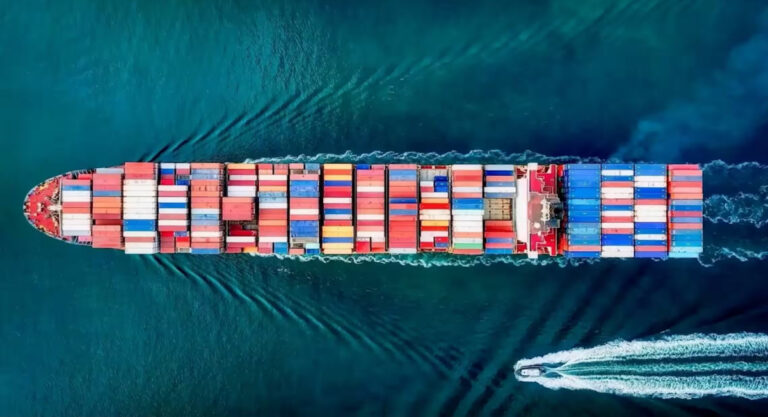T&E’s William Todts looks at whether a climate deal that potentially doubles the global biofuels market can be considered a good deal?
On the banks of the River Thames in London, the headquarters of the International Maritime Organization (IMO) sits quietly, largely unnoticed by passers-by, much like the shipping industry that it regulates. Entering the building feels like visiting a museum. Model ships, sculptures, paintings, tapestries adorn the hallways. It’s a fitting backdrop given that maritime trade is one of the world’s oldest industries. But it belies the revolutionary plans made by IMO.
In 2023, in response to Europe taking decisive action on shipping, the IMO set fairly ambitious climate targets with goals for 2030 and 2040 as well as a net-zero destination around 2050. In April 2025 it took a major step forward and agreed to an actual regulation to achieve these goals.
It’s hard to understate the significance of this. There are hardly any globally binding climate rules. Of course Trump and his allies from the Arab petro-states tried very hard to derail the process, but, in the end, Europe, China, East Asia and Latin America, with grudging neutrality from others like the Pacific Islands, made a preliminary deal based on a very clever compromise proposal by Singapore.
Negotiators agreed a mandate to reduce the GHG intensity of fuels used in shipping, with intensity targets declining over time, alongside an innovative penalty pricing system for ships that fail to meet the lower intensity targets. In essence, the rule has a second set of targets that are harder to reach, but come with a pay to comply escape clause.
And so for the first time we have a multilateral measure that will generate some — albeit limited — revenues for decarbonisation from a specific sector. The inspiration for all of this was Europe and its FuelEU and ETS, which T&E praised as game changers.
So what’s not to like?
The first problem is that the agreement simply isn’t ambitious enough. The proposed rules would exempt nearly 90% of shipping emissions from carbon penalties. Despite being sold as a global carbon price by some, the penalty mechanism will raise only $10 billion per year. That’s the same as the EU ETS, but for the entire world.
But the biggest problem is that the IMO deal risks creating a huge new market — potentially doubling the global biofuel market, including road, by 2035 — for rainforest destroying biofuels like palm and soy. By refusing to include indirect land use change or to otherwise restrict land hungry biofuels, the deal makes crop biofuels and LNG the cheapest compliance options until at least 2035, and thus the go-to options for most shipowners.
Of course this is no coincidence. European negotiators were so desperate to secure a deal with the support of Brazil and other palm and soybean producing nations, that they signed up to a policy that would not be legal in Europe itself.
To meet this huge extra demand swathes of forests will need clearing. This is as absurd as it sounds. T&E’s own analysis shows that this could result in up to up to 270 Mt CO2e of additional emissions by 2035 — the yearly emissions of France.
The draft framework has no incentives for zero emission fuels like e-fuels or electricity. Unless that changes the IMO rules will only start to seriously create a business case for those fuels, even in small volumes, around 2040.
To add insult to injury, shipping lobbies are already using the IMO deal as an excuse to call for the dismantling of the EU’s shipping regulation (FuelEU Maritime) as well as the ETS, which taxes six times more of Europe’s shipping’s carbon emissions than the IMO’s future Net Zero Framework. The EU is talking about a new industrial strategy for shipping. If it surrenders its ability to regulate to London, it loses a critical piece of its industrial strategy toolkit. If it abandons the ETS, it also loses the funds to finance its ambitions.
And so we find ourselves pondering the age old question: how much ‘damage’ is acceptable to achieve a greater good? Should we support this multilateral deal, simply because it is a step forward, even if it risks destroying the world’s rainforests and might not actually reduce emissions for many years? It is not a rhetorical question. Europe alone can’t decarbonise shipping. It needs the rest of the world to follow, and for better or worse, the IMO has a major role to play.
But in the end truth trumps tactics. And the truth is that it is good that countries came together but what they agreed is bad policy. It will cause a lot of harm, unless changes are made. Europe should align with the best parts of the IMO deal but it would be shameful for the Commission to even consider opening up its shipping laws to palm oil biofuels.
By William Todts, Executive Director. Article from T&E.
Sign up for CleanTechnica’s Weekly Substack for Zach and Scott’s in-depth analyses and high level summaries, sign up for our daily newsletter, and follow us on Google News!
Whether you have solar power or not, please complete our latest solar power survey.
Have a tip for CleanTechnica? Want to advertise? Want to suggest a guest for our CleanTech Talk podcast? Contact us here.
Sign up for our daily newsletter for 15 new cleantech stories a day. Or sign up for our weekly one on top stories of the week if daily is too frequent.
CleanTechnica uses affiliate links. See our policy here.
CleanTechnica’s Comment Policy



